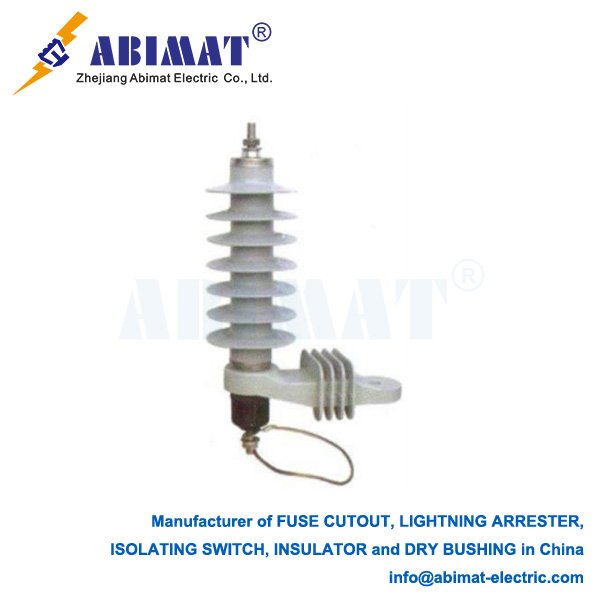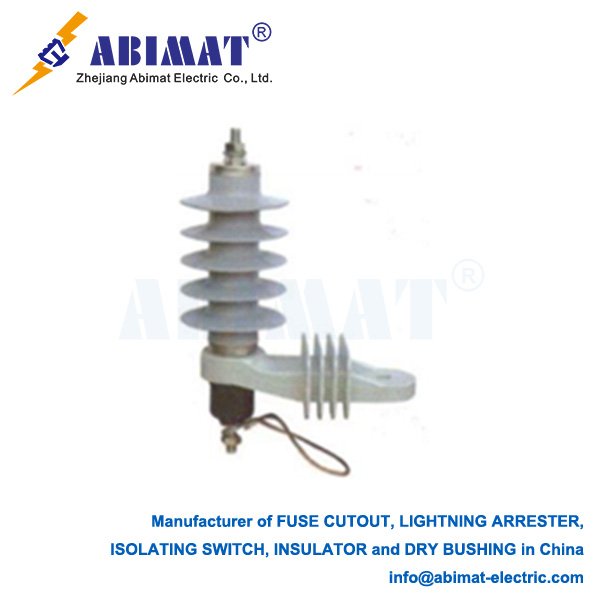15kV Surge Arresters: Essential Medium-Voltage Protection
Function & Purpose
15kV surge arresters protect electrical equipment in 15kV systems from transient overvoltages caused by lightning strikes and switching operations. They act as voltage-sensitive switches between phase conductors and ground. Under normal operating voltage (< threshold), they exhibit high impedance (open circuit). During transient overvoltages, they instantly switch to low impedance, diverting surge current to ground while clamping the voltage across protected equipment (residual voltage, Up) to a safe level below its Basic Impulse Insulation Level (BIL). Post-surge, they autonomously reset.

Core Technology: ZnO Varistors
Modern 15kV arresters exclusively use Zinc Oxide (ZnO) varistors. A stack of sintered ZnO discs (doped with Bi₂O₃, Sb₂O₃, etc.) forms millions of grain-boundary p-n junctions:
– Normal Operation: Junctions act as barriers, permitting only microamp leakage current.
– Surge Condition: High electric fields cause junction breakdown via quantum tunneling, enabling massive current flow to ground while clamping voltage.
– Self-Restoring: Junctions reform post-surge.
Advantages over legacy SiC technology:
– Lower protective levels (Up)
– Nanosecond response
– Higher energy absorption
– Negligible power-frequency follow current
– No series gaps required
Critical Selection Parameters
I.Rated Voltage (Ur): Max temporary power-frequency overvoltage (RMS) withstandable for 10s (per IEC/IEEE). Must exceed site-specific Temporary Overvoltage (TOV). Typical range: 18kV–27kV (depends on system grounding).
II.MCOV (Max Continuous Operating Voltage): Highest RMS phase-ground voltage for continuous service. For solidly grounded 15kV systems (V_phase-ground ≈ 8.66kV), 10.2kV–13kV is typical. Critical for resistance-grounded systems.
III. Nominal Discharge Current (In): Peak 8/20 µs lightning current rating (e.g., 10kA or 20kA). Higher In = greater robustness for high-exposure areas.
IV.Protective Levels:
– Lightning Impulse (LPL/Up): Max residual voltage at 8/20 µs current (e.g., Up(10kA)). Must be 20-30% below equipment BIL (e.g., 95kV BIL).
– Switching Impulse (SPL): Residual voltage under switching surge currents (e.g., 30/60 µs).
V.Pressure Relief Rating: Max fault current (kA RMS) the arrester can safely interrupt if catastrophically failed. Critical for personnel safety.
VI.Creepage Distance: Leakage path length on housing, sized per pollution severity (IEC 60815).
Applications
Deployed at critical 15kV system points:
– Transformer HV bushings
– Switchgear/Circuit Breakers
– Motor/Generator terminals
– Capacitor bank terminals
– Cable terminations & substation entrances
– Industrial/mining power feeds
Selection & Installation
Selection requires:
– Precise matching of Ur and MCOV to system grounding and max TOV.
– Up must coordinate with protected equipment BIL.
– In and energy class must suit location exposure.
– Housing material (polymer/porcelain) and creepage must match pollution/altitude.
Manufacturers like ABIMAT provide application guides for optimal selection.
Monitoring & Maintenance
While maintenance-free, proactive measures ensure reliability:
– Visual inspections: Check for cracks, pollution, or leakage indicators.
– Leakage current monitoring: Detects ZnO block degradation (rising resistive current).
– Surge counters: Track arrester activity.
– Thermal imaging: Identifies abnormal heating.
Replace degraded units promptly.

Conclusion:
15kV ABIMAT surge arresters, leveraging ZnO varistor technology, are indispensable for safeguarding medium-voltage equipment against transient overvoltages. Correct selection—focusing on Ur, MCOV, Up, and safety ratings—combined with basic monitoring, ensures system reliability and longevity in industrial, utility, and legacy 15kV networks.

